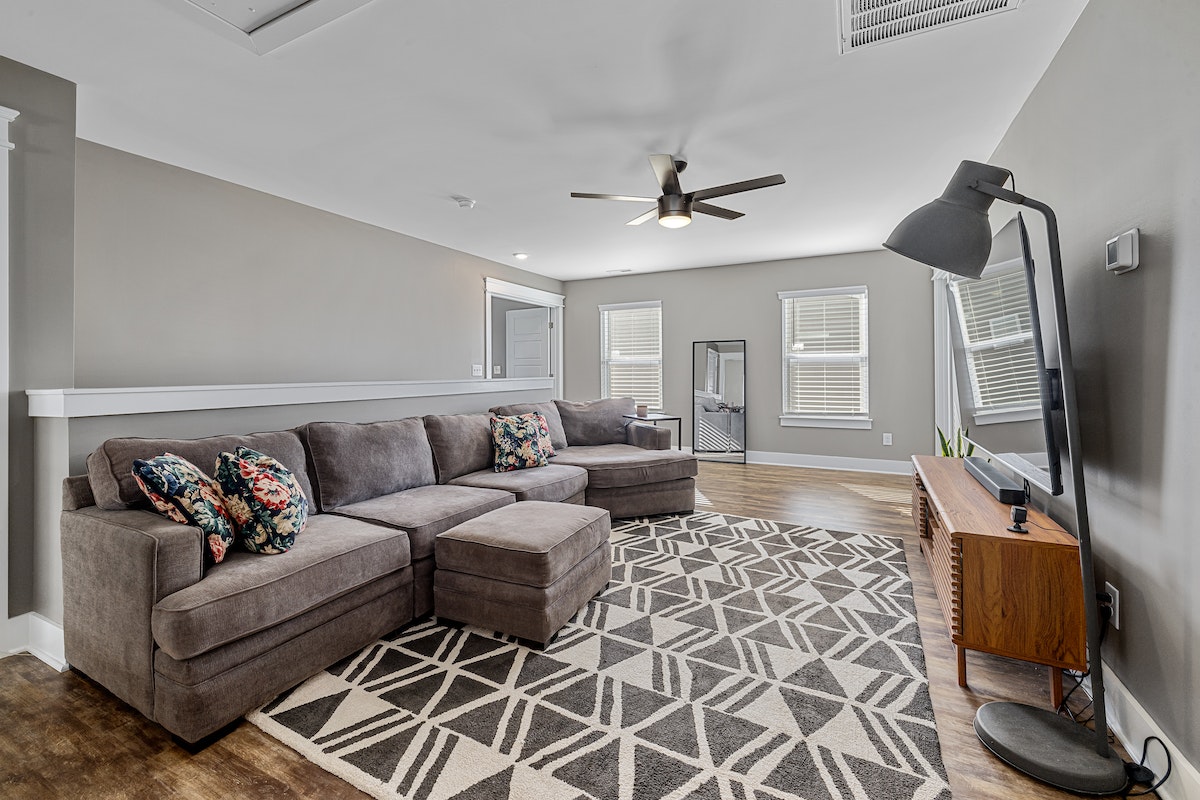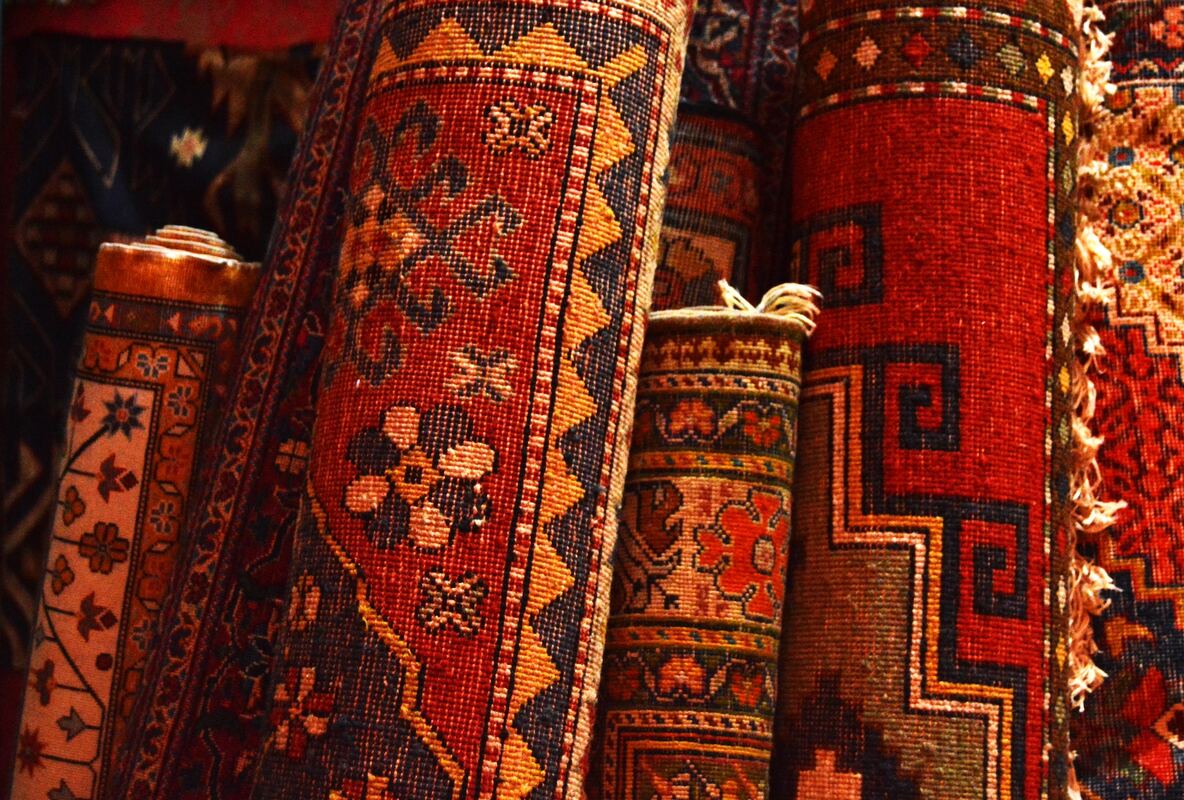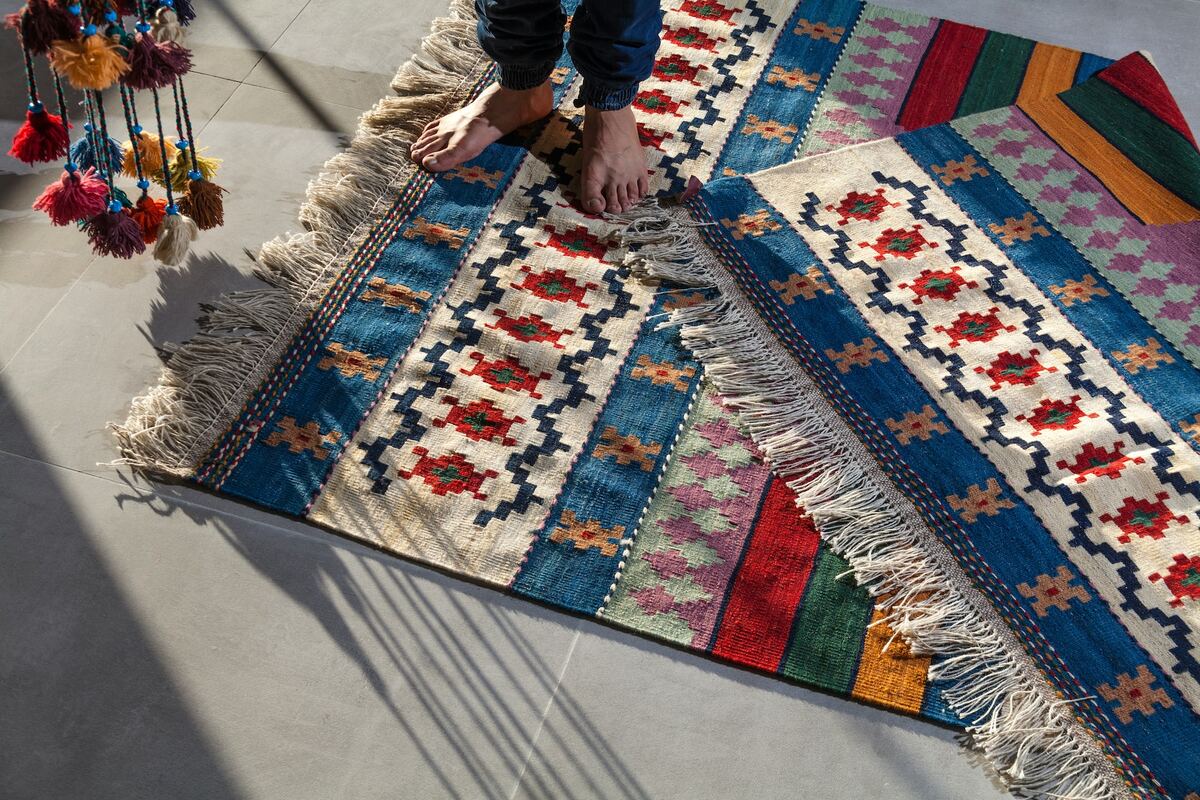Flooring is vital in any home, serving as a foundation and adding aesthetic value. In 2020, the global flooring market was valued at $388.24 billion, highlighting its significance in home ownership.
As homeowners, it is crucial to maintain and protect floors. Among the most popular ways to do so is through carpets. While carpets are known for their durability and comfort, they also provide insulation and reduce noise. Interestingly, recent reports suggest a future resurgence of carpet on floors, sparking the question: Is it feasible to enhance décor by adding a rug over a carpet? Let’s delve into the benefits and possibilities of incorporating a rug on the carpet and how it can elevate your living space’s style and functionality.

Is It Okay to Put a Rug over a Carpet?
The question of whether it’s acceptable to place a rug over a carpet is a common one among homeowners seeking to enhance their interior design. The answer? Yes, it is absolutely okay to put a rug over a carpet. In fact, it can be a fantastic way to elevate your décor and add an extra layer of style and comfort to your living space.
Tips and Tricks for Perfectly Layering Rugs on Carpet
Layering rugs on carpets can be a creative and effective way to enhance your home’s décor. However, achieving the perfect balance and visual appeal requires some thought and consideration. Here are some valuable tips and tricks to help you master the art of layering rugs on carpets.
Mixing Textures
Mixing textures can add depth and visual interest to your space when layering rugs on a carpet. Consider pairing a plush, soft rug with a textured or woven rug. This combination creates a pleasing contrast and adds a tactile element to the overall design. Experiment with materials like wool, jute, or faux fur to create a textural interplay that adds warmth and richness to the room.
Harmonizing Colors
Achieving a cohesive color scheme is crucial when layering rugs on carpets. Look for rugs that complement or harmonize with the existing colors in your room. You can choose rugs with similar hues for a subtle, harmonious look or contrasting colors to make a bold statement. Consider the overall color palette of your space and select rugs that tie in with the existing furniture, walls, and accessories.

Size Matters
Proper sizing is essential to achieve a visually pleasing layered rug look. When selecting a rug on top of the carpet, ensure it is appropriately sized for the area you want to define. Ideally, the layered rug should be slightly smaller than the underlying carpet, allowing a border of the carpet to show. This helps maintain proportion and prevents the layered rug from overpowering the space. However, suppose you want to make a bolder statement. In that case, you can choose a larger rug that covers a significant portion of the carpet.

Patterns Simplified
Layering rugs with different patterns can be tricky, but it can also add excitement and personality to your space. To avoid overwhelming the visual appeal, opt for a layered rug with a simpler pattern or a solid color rug that complements the patterned carpet underneath. Alternatively, you can reverse the approach by choosing a patterned rug as the base layer and placing a more neutral or subtle patterned rug on top. Strive for a balanced and cohesive look that allows the patterns to complement each other without competing for attention.
Practicality and Comfort
While aesthetics are important, remember the practical aspects of layering rugs on carpets. Consider the space’s function and choose rugs suitable for high-traffic areas. Ensure the layered rugs lie flat and do not pose a tripping hazard. Additionally, opt for rugs with a non-slip backing or use rug grippers to prevent slipping or shifting. Finally, prioritize comfort by selecting rugs with appropriate padding or thickness, especially if the layered rug is placed in a lounging or seating area.
Why Adding a Rug on Carpet Makes Sense
Adding a rug on top of the carpet is a practical and aesthetically pleasing choice that offers numerous benefits. Let’s explore these advantages in more detail.
Elevating Your Décor: Adding Style and Personality
One of the primary reasons to add a rug to a carpet is to elevate your décor and infuse your space with style and personality. A well-chosen rug can act as a focal point, tying together different elements of your room and adding visual interest. By selecting a rug with a unique pattern, texture, or color that complements your existing furniture and accessories, you can instantly transform the ambiance of your space. The addition of a rug can also help define specific areas, such as seating or dining areas, within an open-concept room, creating a more cohesive and inviting atmosphere.
Protecting High-Traffic Areas: Extending the Lifespan of Your Carpet
High-traffic areas, such as hallways, living rooms, or entryways, are prone to more wear and tear. Placing a rug on a carpet in these areas can provide additional protection, preventing the carpet from getting damaged or worn out too quickly. The rug acts as a shield, absorbing much of the impact from foot traffic and reducing the risk of stains, dirt, or spills reaching the underlying carpet. It can significantly extend the lifespan of your carpet and save you money in the long run by reducing the frequency of carpet replacements or professional cleaning services.
Cozy Comfort: Enhancing Softness and Warmth
Combining plush and soft rugs creates a luxurious and comfortable environment. Adding a rug to a carpet introduces an extra layer of softness underfoot, enhancing the overall comfort of your space. Whether you choose a cozy shag rug or a thickly padded rug, the cushioning can make your living areas more inviting and relaxing. Additionally, rugs provide insulation, especially in colder months, by trapping heat and making your space feel warmer and cozier.
Camouflaging Carpet Imperfections: Concealing Damage and Stains
Over time, carpets may develop imperfections such as minor stains, discoloration, or wear marks. Placing a rug on a carpet can cleverly camouflage these flaws, allowing you to enjoy a visually appealing space without needing extensive repairs or replacements. By strategically positioning a rug over the problem areas, you can divert attention and draw focus to the rug’s design, effectively concealing any carpet imperfections.
Adding a rug to the carpet can be a fantastic choice for enhancing your home’s décor, protecting high-traffic areas, and increasing comfort. It allows you to add style, personality, and warmth to your space while providing practical benefits. By selecting the right rug and using proper underlay, you can enjoy the advantages of rug layering without damaging your carpet.
Frequently Asked Questions (FAQs) about Layering Rugs on Carpet
Do Area Rugs Ruin Carpet?
No, area rugs do not ruin the carpet. In fact, they can protect the carpet from wear and stains, extend its lifespan, and add style to the space.
What Should You Use as Underlay for a Rug on Carpet?
A non-slip rug pad or gripper is recommended as an underlay for a rug on a carpet. It helps keep the rug in place, prevents slipping or bunching, and provides cushioning and comfort.
Can Rubber-Backed Rugs Damage Carpet?
Rubber-backed rugs can potentially damage carpets over time. The rubber backing may trap moisture, leading to discoloration or deterioration of the carpet fibers. It’s advisable to use a non-slip rug pad instead.
Why Does My Rug Keep Moving on My Carpet?
A rug may move on the carpet due to insufficient grip or friction. A non-slip rug pad or gripper underneath can help prevent slipping and securely keep the rug in place.
Is It Okay To Put Rugs on the Carpet?
Yes, it is generally okay to put rugs on the carpet. It can enhance décor, protect the carpet, add comfort, and create visual interest. Using a non-slip rug pad can help keep the rug in place.
Can You Put a Rug on Top of Another Rug?
Yes, you can put a rug on top of another rug. Layering rugs can add depth, texture, and visual interest to a space. Ensure the top rug is slightly smaller than the bottom to create a balanced look.
When Should You Not Use a Rug?
You may not need a rug when showcasing beautiful hardwood floors or when you prefer a minimalist aesthetic with unobstructed flooring. Additionally, rugs may not be suitable in areas prone to moisture or where safety is a concern.
Can You Put a Rug in a Bedroom With Carpet?
Yes, you can put a rug in a bedroom with a carpet. It can add style, warmth, and comfort to the space. Choose a rug that complements the bedroom decor, and consider using a non-slip rug pad to keep it in place.